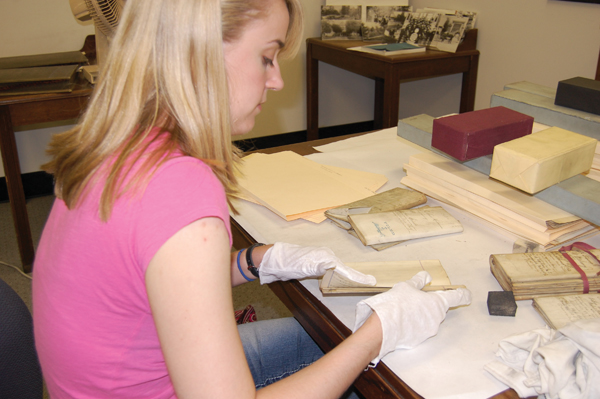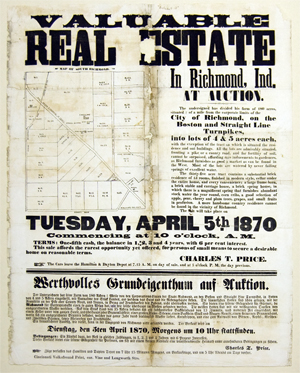A collaborative effort between the State Archives Division of the Indiana Commission on Public Records and the Indiana Supreme Court has resulted in the cleaning, preservation, cataloging and posting in a database on the Internet, of approximately 31,000 Indiana Supreme Court cases dating from 1791 to 1878. Ultimately, this project will encompass every decided and dismissed Indiana Supreme Court case from 1791through the 1970s.
The official Indiana Supreme Court cases start in 1817, but the State Archives had 18 boxes of cases dating to the territorial years 1791 to 1817. Upon learning that it had started the important preservation of these old cases, Chief Justice Randall T. Shepard offered the Court’s moral and fiscal support in order to assure the preservation of these important pieces of Indiana history.

An improved catalog was one of the key factors of this effort. “We originally had to rely on very inadequate indexes to look up these cases,” said Dr. Alan January, Director of Patron Services, Indiana State Archives. “Cases before 1868 had been arranged in alphabetical order by only the first defendant named, which, of course, was fine if you knew the name. The people who were searching for the second party had to look through thousands of files, which was not very easy.”
Getting through the categorization of the old documents was only the first step. In that era, coal was the primary fuel used for heating, so many documents were covered in soot. Surprisingly, very few of the cases were completely ruined or in need of major restoration and the restorers were pleased with how well most of them looked, considering that they were as old as or older than the State of Indiana.

Maps and pictures that had been entered into evidence as part of these cases have now been carefully cleaned and preserved in display cases. Among the exhibits is a layout of the first Indiana State Prison in Jeffersonville (which housed both men and women) and ticket prices for the Jeffersonville railroad.
Dr. January said interns and volunteers—many of them students from Butler University and Indiana University–Purdue University–Indianapolis (IUPUI)—have been a huge help and “extremely enthusiastic” in the preservation process. They remove the case files from their original packaging, untie the pinkish ribbons that bind the case materials and, wearing white cotton gloves, use “soot sponges” for cleaning.
“The gloves help, but we always somehow manage to still get soot all over us,” said Abigail Kennedy, a volunteer from IUPUI.
The students find the heaviest things they can—usually bricks—to place on top of the documents so they will lay flat. The cases are placed in acid free folders which are put into acid free boxes. They are then stored and protected in the climate and humidity controlled vault of the archives.
Elizabeth Hague, the Archives’ conservation technician, steps in when documents require more than just a soot sponge. She cleans and preserves many of the maps and drawings found in the cases. Hague receives all of the “logs”—the court cases that are rolled so thickly that they literally resemble a log made of paper. She dehumidifies them so they can roll out more easily and then places them in large presses to keep them flat. When any document needs just a bit more attention, she takes to her tools: strips of Japanese mending tissue and methyl cellulose, which patch the document back together.
Many people have been drawn to the archives because of the historical significance of the cases. Dr. January said there has been particular interest in the slavery cases, women’s suffrage, and early challenges to segregated schools. Hague has her own favorite cases, including one divorce proceeding where the husband was declared insane and sent to the state hospital.
These documents have stirred the most interest for historians, genealogists and families looking to trace their roots, Dr. January said. As soon as the first cases went online, he said that requests increased a “hundredfold” for cases involving wills and estates. Susan Brook came all the way from Florida to visit the archives. After seeing family names in the online index of court cases, she traveled to Indiana to see in person the documents about her ancestors Josiah Harbaugh, Thomas Cade, and Jacob H. Powers.
Significant progress has been made on this daunting project, but there is still plenty of work ahead. The staff of the State Archives Division is eagerly forging ahead to make publicly and easily available a wealth of historic information about Indiana and its residents.